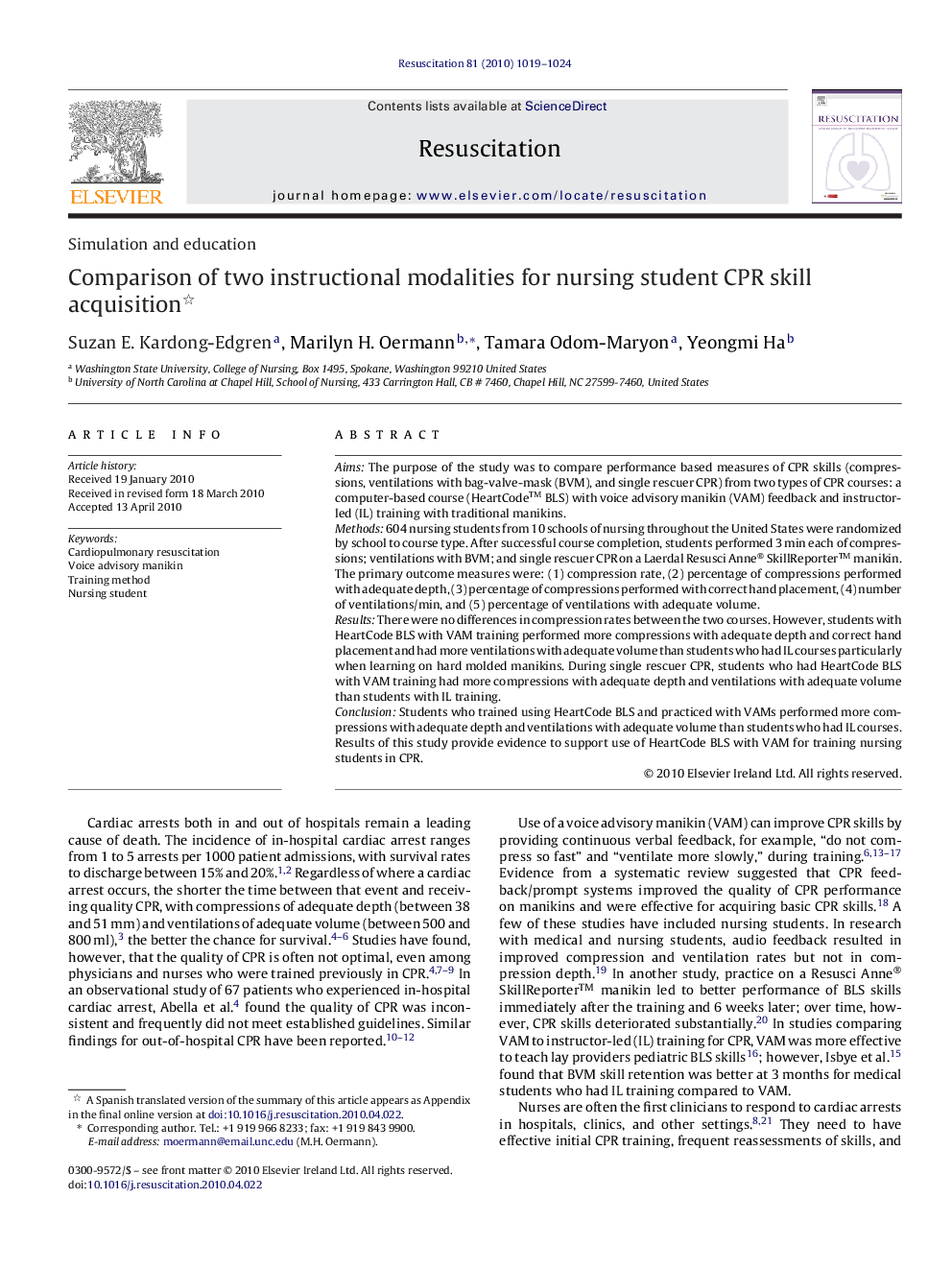| Article ID | Journal | Published Year | Pages | File Type |
|---|---|---|---|---|
| 3009641 | Resuscitation | 2010 | 6 Pages |
AimsThe purpose of the study was to compare performance based measures of CPR skills (compressions, ventilations with bag-valve-mask (BVM), and single rescuer CPR) from two types of CPR courses: a computer-based course (HeartCode™ BLS) with voice advisory manikin (VAM) feedback and instructor-led (IL) training with traditional manikins.Methods604 nursing students from 10 schools of nursing throughout the United States were randomized by school to course type. After successful course completion, students performed 3 min each of compressions; ventilations with BVM; and single rescuer CPR on a Laerdal Resusci Anne® SkillReporter™ manikin. The primary outcome measures were: (1) compression rate, (2) percentage of compressions performed with adequate depth, (3) percentage of compressions performed with correct hand placement, (4) number of ventilations/min, and (5) percentage of ventilations with adequate volume.ResultsThere were no differences in compression rates between the two courses. However, students with HeartCode BLS with VAM training performed more compressions with adequate depth and correct hand placement and had more ventilations with adequate volume than students who had IL courses particularly when learning on hard molded manikins. During single rescuer CPR, students who had HeartCode BLS with VAM training had more compressions with adequate depth and ventilations with adequate volume than students with IL training.ConclusionStudents who trained using HeartCode BLS and practiced with VAMs performed more compressions with adequate depth and ventilations with adequate volume than students who had IL courses. Results of this study provide evidence to support use of HeartCode BLS with VAM for training nursing students in CPR.
